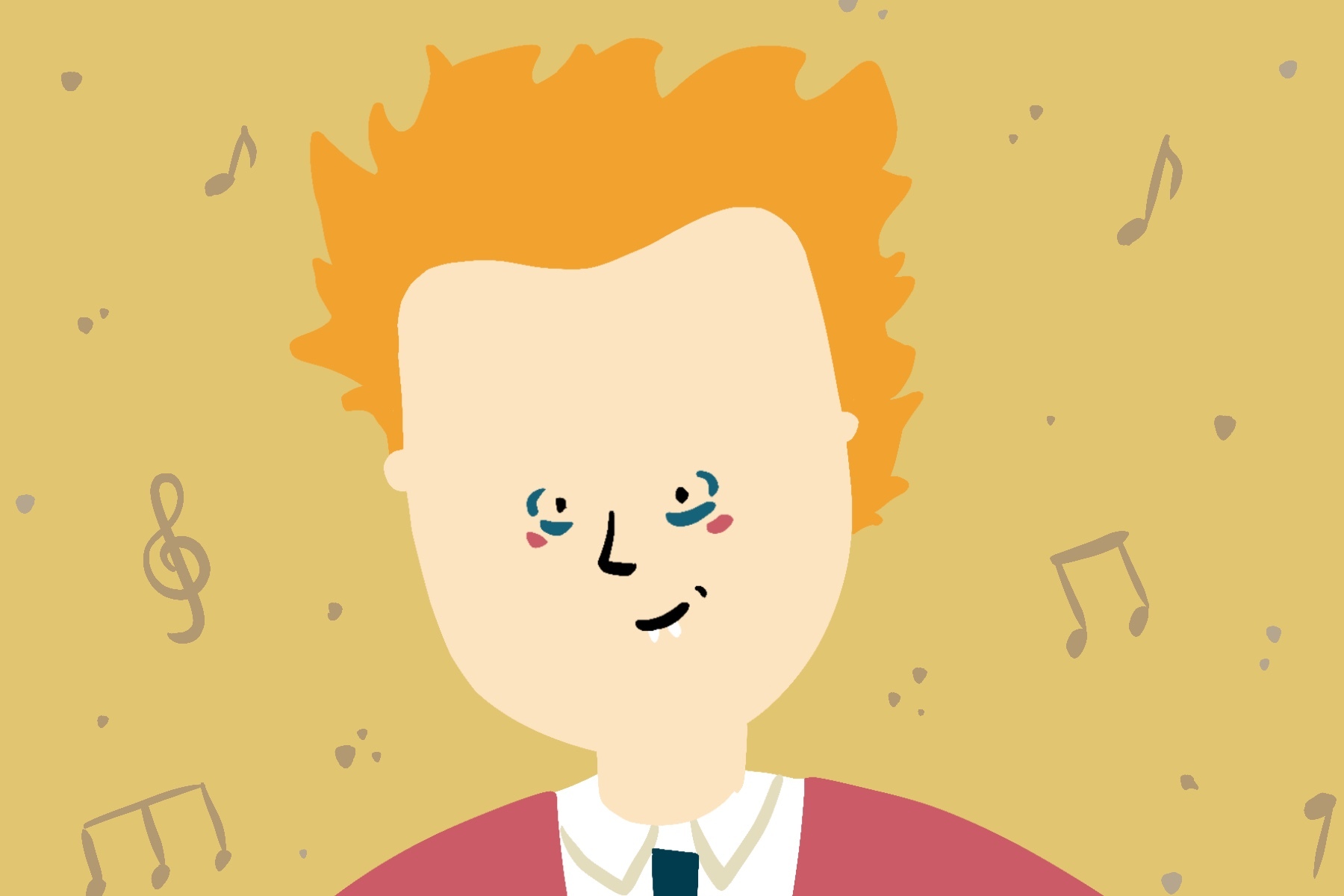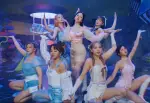British-born singer Ed Sheeran has finally returned after his two-year hiatus from music. His new single “Bad Habits,” his first new release since his 2019 album, “No. 6 Collaborations Project,” is already hitting the charts all over the world.
Many fans were initially surprised as “Bad Habits” seemed to digress from Sheeran’s usual style of stripped-down acoustic melodies, instead encompassing more aspects of electronic music. The music video is also anything but formulaic — throughout, Sheeran flies around in the night dressed as a vampire.
Although Sheeran has admitted to drawing inspiration from the late-‘90s hit show “Buffy the Vampire Slayer,” the video also consists of several subtle sociopolitical messages and visual parallels to Todd Phillips’ “Joker” (2019).
The “Bad Habits” music video opens with Sheeran sitting in a hair salon, dressed sharply in a head-to-toe hot pink suit, trading his distinct ginger hair for bleached locks and donning white fangs for teeth. Immediately, there is a distinct similarity between the film “Joker” and the music video. Although they sport different hair colors and styles, both Joker and Sheeran don a bright, clean-pressed suit along with ostentatious makeup in order to echo their own unique persona.
As the music video proceeds, Sheeran’s makeup gradually gets lighter and finally disappears in the end, essentially signifying the chaos dissolving both within himself and throughout the streets. In “Joker,” however, the color of Joker’s cosmetics progressively becomes darker in order to echo his growing insanity and hostility toward upper-class society.
In addition to this connection, there is also an interesting portrayal of gender stereotypes in this particular scene. Sheeran’s very presence in a presumably female-populated salon seems to subvert the stereotypes of men not caring about their appearance and of beauty being a feminine obsession. Many of the men that also appear alongside Sheeran seem to be represented as the metrosexual type — all adorned with various styles of clothing and hair. Through his fashion choices in the music video, perhaps Sheeran is subtly paying homage to the LGBTQ+ community and demonstrating support for Pride Month.
One of the most obvious visual parallels to Joker exists in the middle of the “Bad Habits” music video, when Sheeran is nonchalantly walking through a chaotic, conflict-ridden alley along with his posse. This part bears a striking resemblance to one of the most iconic scenes in “Joker,” where the main character, Arthur Fleck (or Joker), proceeds to calmly walk out of the subway tunnel while rioters proceed to brutally beat two detectives who were closely pursuing him.
What is common to each one is that they both seem to lionize violence. Both scenes revolve around chaos and anarchy, ultimately questioning whether both Sheeran and Joker are villains or spokespeople for the seemingly crazed or oppressed (represented in both scenes through the people in the background).
The following scene in the music video depicts Sheeran coming across a young vampire and offering them a yellow smiley face balloon to cheer them up in the midst of the ongoing turmoil. This is most reminiscent of one of the earlier scenes in “Joker” where Fleck attempts to entertain a kid who is sitting in front of him on the bus. After he briefly manages to succeed in doing so, he proceeds to burst into random laughter and shows a card to a fellow passenger that describes his random fits of laughter as a “neurological condition.”
Although both scenes consist of chortling and smiles, they evoke a paradoxical sense of despair and sadness due to the dismal and grungy background. The setting (for both the video and the film) consists of urban infrastructure that is waiting to collapse under the pressure of a general feeling of chaos, despondency and nihilistic exhaustion.
Perhaps the most impactful yet fleeting scene in “Bad Habits” is when vampire Sheeran stops a speeding car from crashing into him, ousting an inflatable dummy that looks exactly like him. This moment of the music video seemingly corresponds with one of the most consequential scenes in “Joker” where Fleck proceeds to dance in a grimy bathroom after gunning down three young Wall Street businessmen in the subway.
In Sheeran’s music video, the dummy figure that is ejected out of the car proceeds to deflate and shrivel up. In “Joker,” however, Fleck, who is constantly hunched over with his spine sticking out of his emaciated frame, instead begins to finally stretch out his limbs and twists his physique into several unique, unnerving forms.
These two parallels essentially epitomize both Sheeran and Joker transcending their own flesh in a way, gradually accepting their shadowy personas that were born amid the chaos. Both Sheeran and Fleck deeply express their characters through their own bodies.
The climax of the music video, where Sheeran proceeds to dance through the violent mob, is somehow haunting as it closely resembles the ending of “Joker.” Both scenes seem to symbolize either a “rebirth” or even a death of some sort. They both appear to become comfortable with their savagery and callousness to the occurring violence.
Although it seems as if both the music video and “Joker” are settling upon an ending in which society crumbles due to persisting anarchy, both Sheeran and Fleck are suddenly thrust back into a light-filled society. Some can see this as a glimmer of hope in the midst of a dire environment, while others may view it as an unspoken menace. Nevertheless, the ending for both is sudden and unexpected to the point where the audience questions whether the past events truly happened or not.
Overall, both Ed Sheeran’s “Bad Habits” music video and Todd Phillips’ “Joker” remain rather ambiguous in nature. These parallels may be somewhat of a stretch, but it is safe to say that both works are well-coordinated and present a rather unconventional portrayal of traditional icons.


















Sup alice